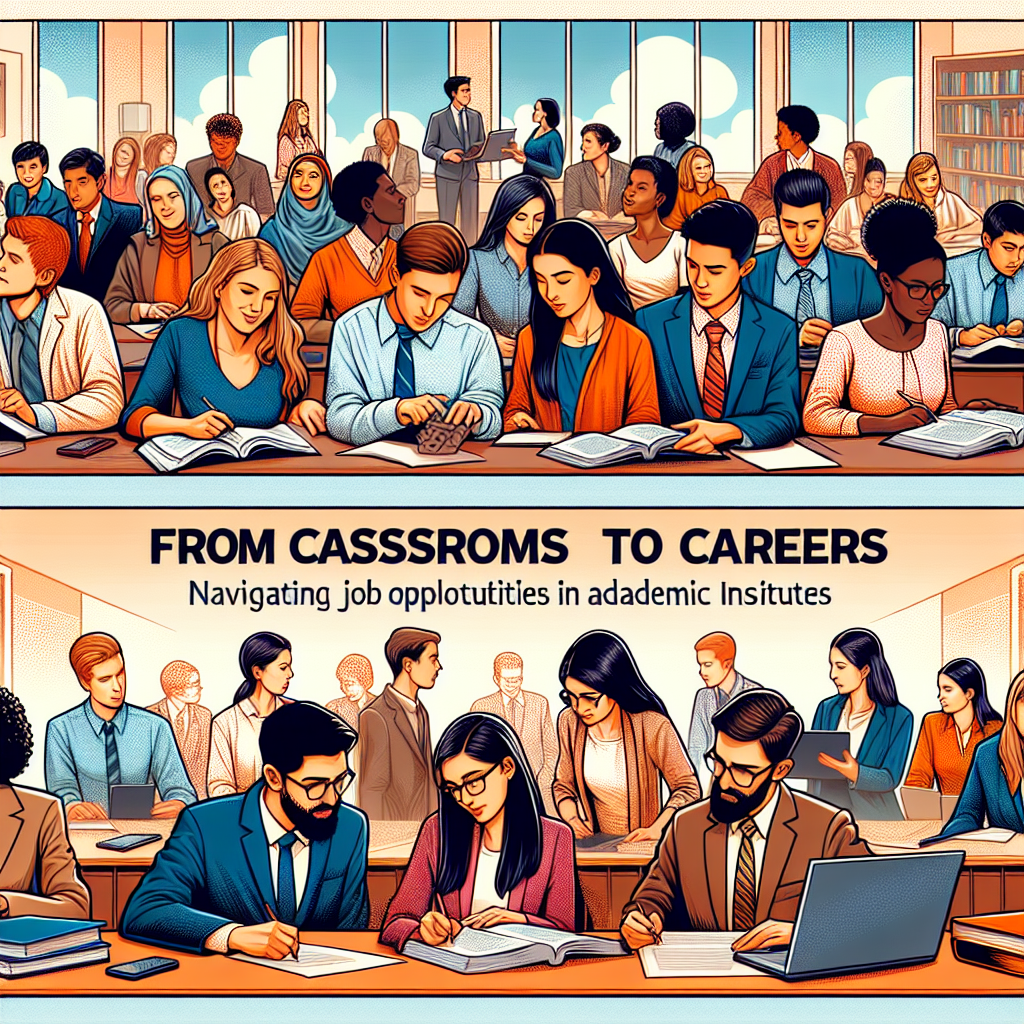In today’s rapidly evolving job market, the transition from the classroom to the workforce can be both exciting and daunting for students graduating from academic institutions. With an increasing emphasis on real-world applicability, academic institutes are not just places for learning; they are also incubators for career opportunities. Understanding how to navigate these opportunities is essential for students aiming to bridge the gap between academic theory and professional practice.
Understanding the Landscape
Diverse Career Paths
Academic institutes provide a variety of career paths that can be tailored to individual aspirations. From research roles in science and technology to administrative positions in the arts and humanities, the job opportunities are expansive. Students should explore various sectors, including:
- Research and Development: Many universities and colleges conduct cutting-edge research. Students can explore opportunities as research assistants, technicians, or project coordinators.
- Teaching and Academia: For those with a passion for education, teaching assistantships or adjunct faculty positions can provide valuable experience.
- Corporate Partnerships: Many academic institutions collaborate with industries, offering students internships or co-op programs that align with their field of study.
The Role of Career Services
Most academic institutions have dedicated career services that can be invaluable for students seeking to find their footing in the job market. These services often include:
- Workshops and Seminars: Covering resume building, interview preparation, and job search strategies.
- Networking Events: Connecting students with alumni and local businesses can foster meaningful relationships and provide job leads.
- Internship and Job Listings: A centralized source for students to find opportunities tailored to their field of study.
Building a Strong Foundation
Internships and Work Experience
Gaining practical experience while in school is essential for standing out in a competitive job market. Internships, co-ops, and volunteer positions all offer students hands-on experience. They also provide opportunities to cultivate essential skills such as teamwork, communication, and problem-solving.
Networking and Professional Development
Building a professional network can be one of the most impactful steps students can take during their academic journey. Engaging with faculty, attending conferences, and participating in student organizations can lead to valuable connections. Furthermore, joining professional associations related to one’s field can provide access to exclusive resources, job listings, and mentorship.
Tailoring Your Skillset
The skills valued in today’s job market often extend beyond academic knowledge. Employers increasingly seek candidates who demonstrate soft skills, such as critical thinking, adaptability, and emotional intelligence. It’s crucial for students to develop a well-rounded skill set that showcases both hard and soft skills.
Crafting a Competitive Application
Resumes and Cover Letters
Creating a compelling resume and cover letter is essential. These documents should not only list academic achievements but should also highlight relevant experiences, skills learned, and personal projects that relate to the position applied for. Tailoring these materials to suit specific job descriptions can significantly increase the chances of landing an interview.
Interviewing Techniques
Students should prepare thoroughly for interviews by researching the organization and reviewing common interview questions. Mock interviews conducted by career services or with peers can provide valuable practice and feedback.
Embracing Lifelong Learning
The transition from classroom to career is not the end of the educational journey; rather, it signifies the beginning of a lifelong learning process. As industries evolve, continued education and professional development are essential to stay relevant and competitive. Students should consider pursuing certifications, attending workshops, or enrolling in online courses related to their field.
Conclusion
Navigating the transition from classrooms to careers requires a proactive approach and a willingness to engage with available resources. By understanding the landscape of job opportunities in academic institutes, building a robust network, gaining practical experience, and honing application materials, students can confidently step into the professional world. The journey may seem overwhelming, but with the right strategies and support, the path from education to employment can be both fulfilling and successful. As students take these vital steps, they not only enhance their employability but also contribute meaningfully to their chosen fields, fostering innovation and progress for years to come.




